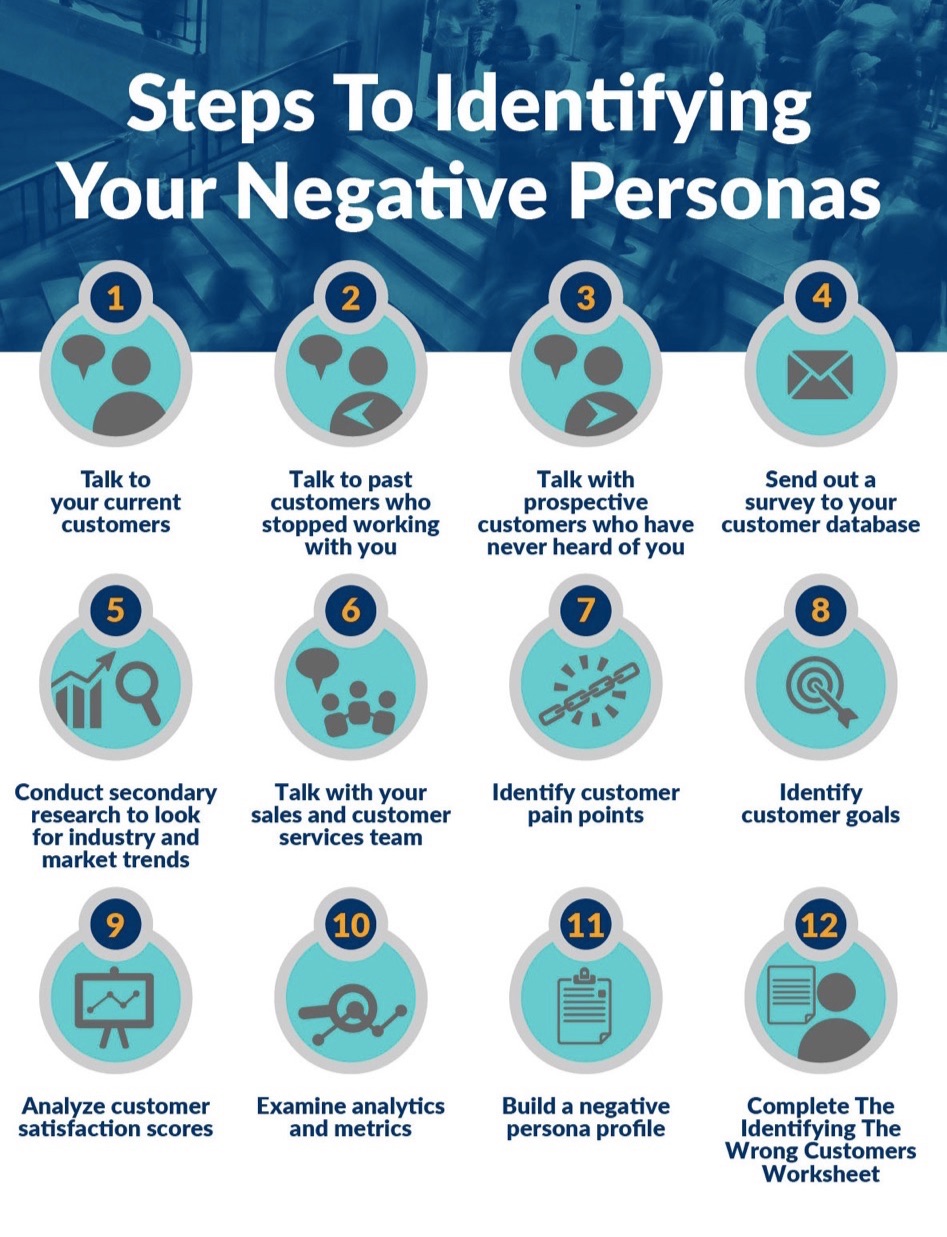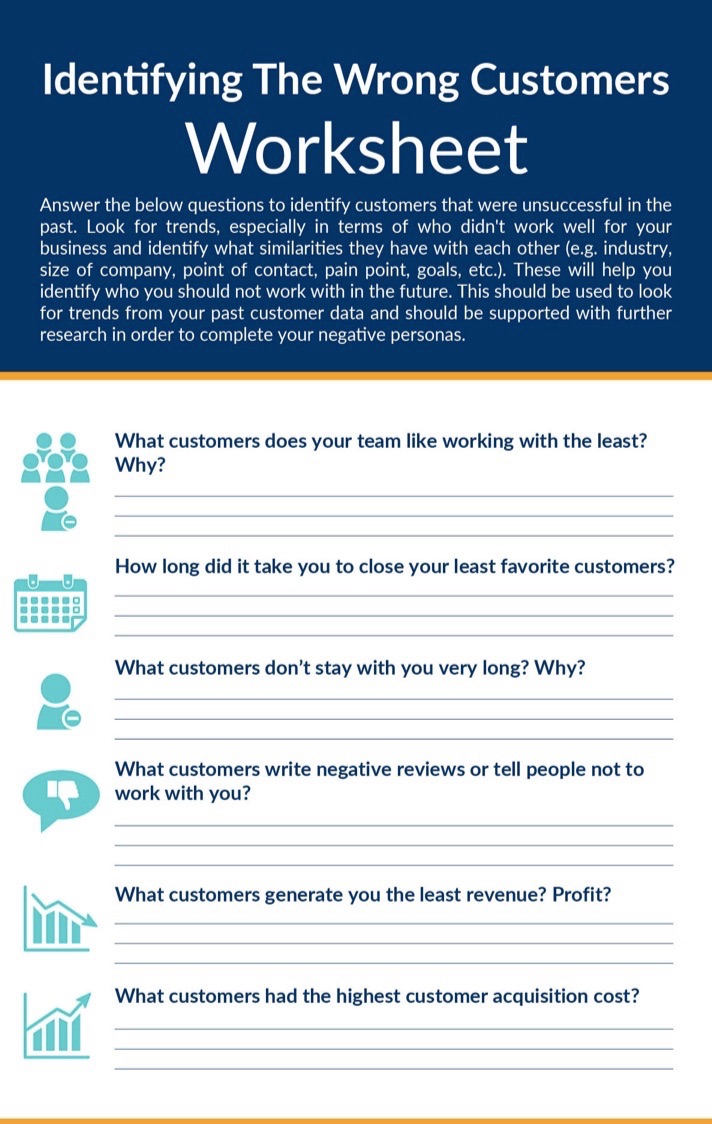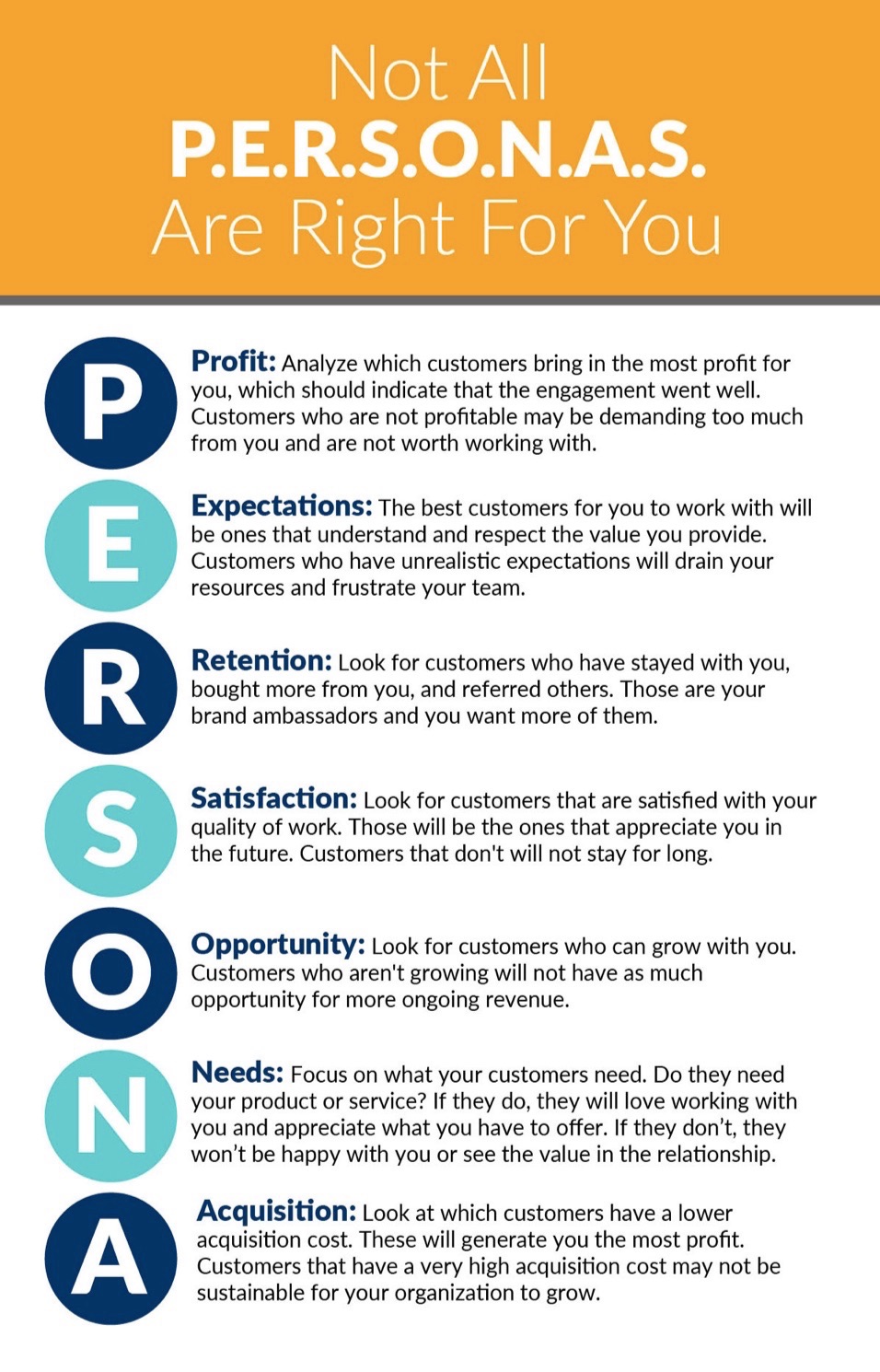There’s been a lot of buzz about buyer personas in marketing over the past few years. But few marketers talk about the power of the negative persona, which is arguably equally important in marketing.
So, what is it exactly? It’s pretty much how it sounds: the opposite of a traditional buyer persona. Traditional buyer personas are intended to help your company flesh out exactly what kind of customer will give you the most revenue, with the least amount of hassle, and then do so repeatedly (or for a very long duration). This type of customer is the one that any company would salivate over; once you have them in your sights, they’re your very own, agreeable, enjoyable money-making machine forever and ever – or at least for the foreseeable future. Of course marketers would want to talk about their ideal customers, because the thought of drawing these folks in is inspiring and exciting.
But a negative persona is a different story. With a negative persona, you want to get as detailed as possible in constructing the demographics and psychographics of the type of customer you do not want. This is the kind of customer that makes your stomach churn and keeps you up at night. This customer complains about everything, communicates inefficiently (or even aggressively), is nearly impossible to satisfy and seems like they may jump ship at any moment. They leave your team feeling exhausted, and they drain you of your resources. Put simply – no amount of money is worth the downsides of dealing with this customer type. And yet many marketers don’t want to talk about these individuals because of two reasons:
- They worry that creating negative personas will mean they have to turn away business. They feel they (and their company) are not in a position to say goodbye to potential revenue, and are concerned they’ll flounder if they become selective about the customers they accept.
- They think it isn’t useful. Many marketers argue that buyer personas are helpful, because they give you the knowledge you need to know where to market to your ideal customers, and how much money to allocate to those avenues. They think that establishing negative buyer personas might be a fun exercise, but won’t actually accomplish anything of value.
The reality is that both of these mindsets are rooted in false misconceptions. Negative buyer personas are actually essential to running a thriving business and knowing how best to market to prospects. So here’s a look at why, and how you can get started on using this important tool immediately for improved customer acquisition.
Step 1: Finish your Traditional Buyer Personas
If you haven’t yet finalized your regular buyer personas, pay some attention to that first. You need to have that part of the puzzle figured out before continuing on to work on your negative personas.
Have your traditional personas finalized? Great. It’s time to start thinking about the type of buyer you do NOT want.
Step 2: Review the Data
I have yet to meet a marketer who doesn’t get excited about reviewing data, so this part should be right up your alley. Begin by reviewing your customer history over the past two to three years. You want to assess customers who were recent enough for you to remember what it was like working with them, and also make sure you cast a wide enough net to include some customers who have been with you for a long time. Once you have a list in front of you, here are some questions to ask:
- Which of these customers expressed dissatisfaction with your company?
- Did you or your team have any direct conflicts with anyone on this list?
- Did you have to spend more money or time than planned with any of these customers in order to ‘fix’ a situation?
- Were there any customers you actually fired before the engagement actually ended?
- Any customers who fired you?
- Are there any other major red flags that stand out to you (misaligned priorities, unrealistic expectations, difficult personalities, billing snags, not a good fit, etc.)?
This should help you narrow down the list considerably. Once you have a new list of customers who fit one or more of the criteria above, then it’s time to seek out common threads among them. Review their information to find out the following:
- What are the ages of the individuals you worked with most closely?
- What were their job titles, career background and income levels?
- What is their industry?
- What is their company’s size?
- What were their stated goals at the beginning of the engagement?
- What was the scope of the engagement?
- What was their level of experience working with a company like yours?
- What type of questions did they ask you during the discovery process? What type of questions did they ask after they hired you?
Once you’ve done this, it’s time to take a look at which factors seem to be repeated across all the customers you identified as being troublesome in the past. There should be at least two to three attributes that stand out time and time again.
Here’s an example. Let’s say you’re a content marketing agency, and you usually work with people who are directors or at the VP level within midsize companies. But when you go back through clients that have caused you grief in the past, you might start to connect the dots that many of them were structured differently. Maybe your main point of contact in the failed engagements was the CEO of a smaller company, so they were consistently wearing too many hats, pressed for time and unable to give you what needed to produce effective content. The goal with all this is to use historical data, fact-finding and some human assessment to understand why these types of folks haven’t been aligned to your company in the past – so you can figure out how to avoid them in the future.
Step 3: Construct your Personas
Once you’ve culled insight into past “problem clients,” you should have a pretty clear view of what your negative personas should look like. The process of putting them together is straightforward: go through demographics, psychographics and any other details you know about them and paint a picture of who that person is. Give them a name, so everyone in your company can refer to them and know who you’re talking about.

Even if you think you could have more, stick to creating between one and three negative personas. When they’re all done, you’re going to use them to inform your decisions about where NOT to allocate your marketing dollars. For instance, maybe one of your negative personas is Agitated Alice. She’s single, in her thirties and a quickly rising leader in her company. She was quick to engage with your brand, but has since been demanding and difficult to work with, often creating problems where none exist. Once you have her persona completed, you can determine where you think Alice would look to find a vendor or partner. You could do this through surveying her, or researching which publications and social media channels are typically used by those who fit her demographics. After you review where your traditional personas spend their time and attention, and make sure there’s no overlap, you can then intentionally avoid wasting your marketing budget on the places Agitated Alice is sure to be.
You can also use what you’ve learned about your negative personas to refine your messaging. You can train your sales team to identify these personas early on in the business development process to avoid wasting time. With this new insight into who you want as customers, and who you do NOT want, your messaging and marketing can be ultra-targeted and on point. And that’s really the only type of marketing that ever achieves wild success, anyway.
Conclusion
In addition to making your life easier, bringing in more of the right customers (and not wasting your marketing funds trying to attract the wrong ones) will improve your customer acquisition cost. The right customer should be easier to convert because they resonate with your brand, lowering the effort to ‘convince’ them. It will save you money in your marketing, and preserve the quality of your vendor/client relationships. The tangible and intangible benefits are plentiful.
And to those who are worried about losing revenue? Just remember that customers who aren’t optimally suited to work with your business, will end up costing you far more (in time, money, staff contentment, reputation, etc.) than they would have given you. It’s time to elevate your standards, and work with the people who will benefit you – and benefit most from your products and services.
About the Author: Jay Feitlinger is the founder and CEO of StringCan Interactive, a digital marketing agency that helps multi-location businesses reach more customers and achieve their marketing goals. He leads the agency in Scottsdale, Arizona and also has a regional office in Paris, France. Jay is also the author of “Family 2.0: Harness Business Principles to Reboot your Family in 4 Days.” Connect with him by visiting www.stringcaninteractive.com.
source https://blog.kissmetrics.com/negative-buyer-personas/



No comments:
Post a Comment